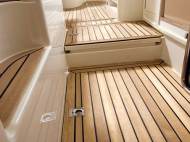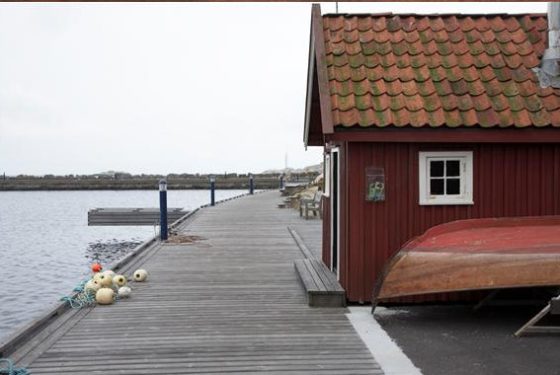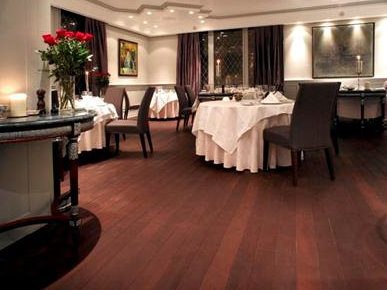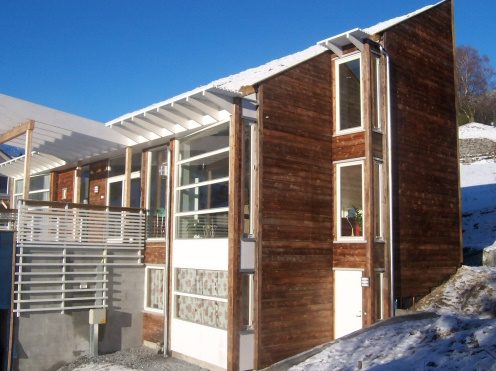Eco-friendly way to create more durable wood – kebonization
 General interest in form and color is growing, as is our desire to add a personal touch to the structures we build. We don’t want to spend all our time and resources on maintaining a house or cabin. And our awareness of environmental and climate issues is on the increase. Since we’re going to cover a couple of wooden architectural solutions in one of our future articles we’re going to write about a process which changes properties of wood in an environmentally friendly manner. Kebony wood products can replace normal surface-treated white wood types that require regular priming and painting. They can replace impregnated timber and precious wood from tropical rain forests. That is why we will be encountering new wood type in a growing number of areas over the coming decades.
General interest in form and color is growing, as is our desire to add a personal touch to the structures we build. We don’t want to spend all our time and resources on maintaining a house or cabin. And our awareness of environmental and climate issues is on the increase. Since we’re going to cover a couple of wooden architectural solutions in one of our future articles we’re going to write about a process which changes properties of wood in an environmentally friendly manner. Kebony wood products can replace normal surface-treated white wood types that require regular priming and painting. They can replace impregnated timber and precious wood from tropical rain forests. That is why we will be encountering new wood type in a growing number of areas over the coming decades.
Kebony ASA is a Norwegian company and they took many years of research in order to create solutions that satisfy their demand for innovation in terms of quality, aesthetics and environmental friendliness. This new variety of wood tolerates harsh climates and acquires an attractive look when it’s exposed to the sun and natural elements.
Most of the light-colored wood types we are familiar with are suitable for kebonization. Currently, the primary wood types they use are pine, beech, Southern Yellow Pine and ash. Kebonization results in levels of hardness, resistance to decay and form stability that are greater than those found in most other varieties of wood.
So, what is kebonization? Kebonization is a time-consuming process in which the properties of the wood are enhanced. The wood becomes harder and more stable, and its durability is improved. The liquid used in the process contains a bio-based substance which forms a stable solid inside the wood. The process involves the following four stages:
- Ingredients are mixed according to a patented recipe.
- The liquid is applied under pressure.
- Drying of the wood materials.
- The wood materials undergo a curing process at temperatures above 100˚C.
The process is close-looped and the liquid ingredient is recycled during the production process. The furfuryl alcohol used as the input chemical is produced from agricultural waste from sugar cane production. The process results in the wood cells being permanently swelled which, compared with untreated wood, reduces shrinkage and swelling by approximately 50%. Kebony products require no form of maintenance beyond normal cleaning. The process increases the density of the materials and makes them stiffer and significantly harder than untreated wood. The raw materials for Kebony are taken from commercially managed forests with large timber harvests.
One of the notable benefits of kebonization is the resistance to weather and wear it provides, an important property in all situations where wood is exposed to the elements. Decking, terraces and jetties are particularly exposed to outdoor conditions which leave their mark. Other notable benefits are exceptionally good decay resistance and a long life span. This durability is achieved without the drawbacks associated with traditional impregnation methods.
Kebony is an environmentally friendly alternative to tropical wood varieties. Only sustainable raw materials are used in the production of Kebony wood. That is why the Swan eco-label to the Nordic pine is used in this process. Unlike building materials such as metals, plastics and concrete, it has a positive climate effect. The products have no harmful effects on the environment. Production of Kebony is based on a liquid extracted from bio-waste. In the waste disposal phase, Kebony can be treated as regular untreated wood. Kebony contains no harmful chemicals that can be released into the environment. The polymer is permanently grafted to the cell structure in the wood by an irreversible process. Modified wood is a durable alternative to preservative treated, surface-coated and tropical timber.
Kebony wood offers new design possibilities too. The wood is well suited for use on façades, roofs, structural details and terraces. It is also well suited for indoor applications such as flooring. The quality aspects are also important to architects in ensuring that structures tolerate climates better than with other wood types – with no priming or painting required.
Although Kebony wood is more expensive than untreated equivalents, its life cycle costs are competitive with other wood materials. Its pro’s are its good durability and long life spans in harsh climates, no need for paint products etc to retain product properties and its required maintenance is limited to normal cleaning. It is only a matter of time when they are going to widen their market into other continents, or get a serious competitor on their own market.












Leave your response!